8 Tips To Increase Your Deadlift
Author:
Unlock your full potential by engaging with our experts and community! Have questions about your fitness journey or looking for expert advice on weightlifting techniques? Don’t hesitate — leave a comment below and Oleksiy Torokhtiy will provide a personalized answer and insights to help you reach your goals.
Torokhtiy is reader-supported. Some links are affiliate links, and we may earn a commission at no extra cost to you. See our disclosure page for details.
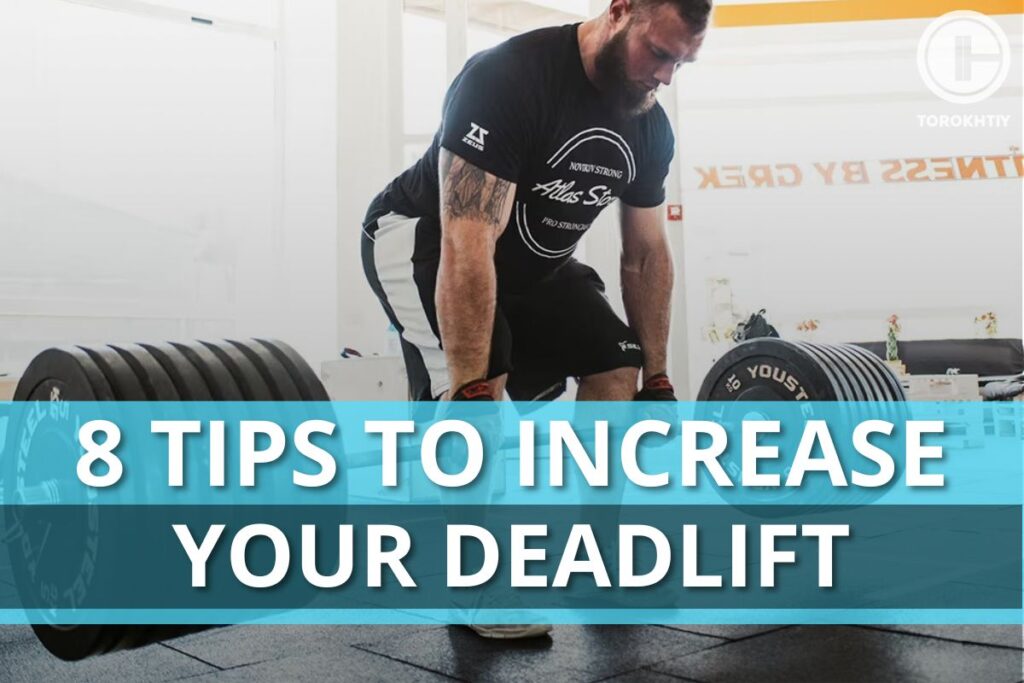
I really love the final part of my seminars, when we, after training and becoming friends, move on to questions and answers. Of course, I am waiting for questions about technical nuances or preparation for a competition. But there has not yet been a single seminar that I was not asked: how much can you do deadlift or bench press)))
In truth, national team-level professional weightlifters do not often set records in basic strength training, as their main focus is on improving their results in the snatch and clean & jerk. But trust me, most of them are strong enough to make a mid-level powerlifter nervous and might even be worthy of him.
Basic strength exercises (squats, bench press, and deadlift) are a must-have set for most speed-strength disciplines in athletics, an important component in the training of American football players, basketball players, hockey players, and, of course, functional fitness athletes, in whom, for example, deadlifts are often found in competitive and training complexes for both the maximum weight and the maximum number of repetitions.
Follow us!

Free!
Get a 2-week Weightlifting Program as a bonus for the subscription to kickstart your training plan!

Free!
You may like it:
When I created my first deadlift training program, I consulted with powerlifting coaches on how to strengthen this part of the movement for amateur athletes and those who need to balance strength, power, and speed.
Deadlift solves a lot of problems: improving posture, increasing strength and muscles, and even fat burning (in combination with a diet) since this exercise is monstrously energy-intensive.
I want to share a set of useful tips with those whose deadlifts are poor, who need to make them even stronger, and who just love to do this exercise and want to do it efficiently and safely.
To begin with, I want to say that I will not even discuss advice on the technique of execution since this is the foundation without which you can immediately make an appointment with a doctor. I have seen so many athletes who were ruined by the lack of correct angles and technique.
In general, here are my tips to improve your deadlift:
1. Do your deadlift regularly
It is not news that regularity and consistency are important for the development of a skill. The deadlift is a hard exercise, you can recover from it for 2-3 days, but for progress in this movement, it should be in your training program 2-3 times a week. With proper planning, progress will begin to be felt after 6-8 weeks of systematic work. But in my opinion, in such basic exercises as squats and deadlifts, the training cycle should ideally last 12 weeks.
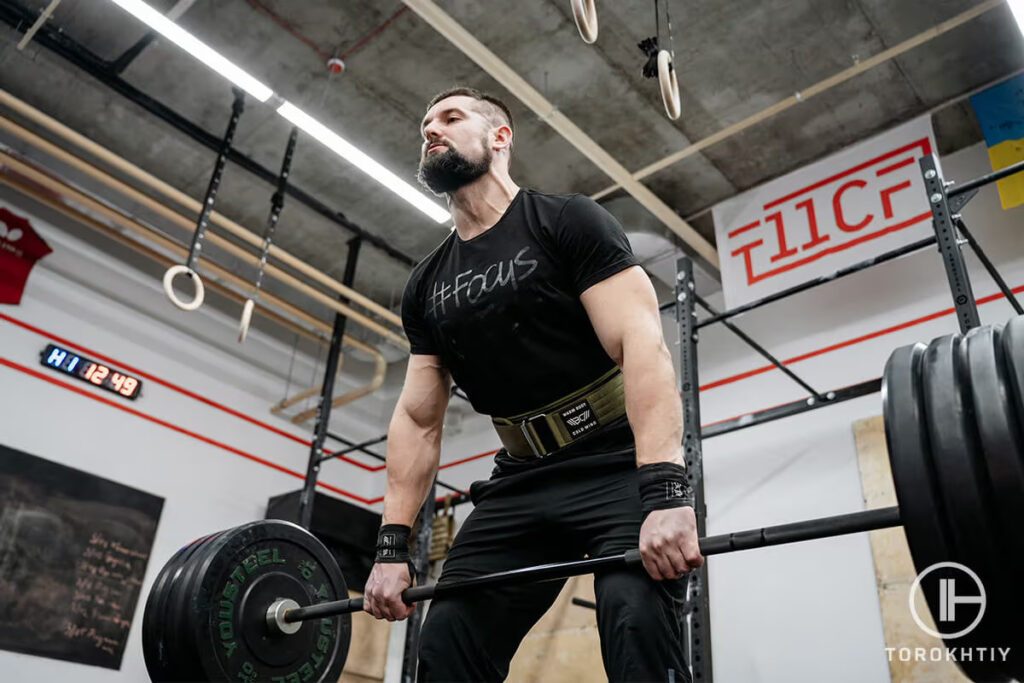
2. Find your grip
When it comes to weightlifting, there is only one option: the hook grip. But when we talk about basic strength training, there are several options:
- standard grip;
- mixed grip;
- straps and hooks.
It all depends on the goals and objectives. In my opinion, if you are training the deadlift as an auxiliary exercise for your sport, such as strongman or MMA, then the more varied your training and grip, the more functional your strength will be.
Based on the above, I recommend the following: use a standard grip for warm-ups and lighter sets, a mixed grip for heavy sets.
For anyone who does not have a deadlift as a competitive exercise, as an option, you can change hands in a mixed grip on each set to avoid imbalance. When working for more reps (6+), it is advisable to use straps or hooks.
3. Strengthen your grip
Everyone who watched the powerlifting meets noticed that athletes’ unsuccessful attempts happen not only because they did not pull the barbell, but also because it slipped out of their hands. Therefore, all strength athletes are constantly working on grip strength.
There is one very simple life hack or habit: try to do all the auxiliary exercises with the usual grip: bent-over rows, pull-ups, farmer’s walks, shrugs, etc.
Another secret that I have seen with professional powerlifters: in the last rep of a set, always linger at the top point for 3-6 seconds to extend the TUT, including to strengthen the grip.
From my personal experience, in weightlifting we use some dynamic exercises:
- Juggling with discs:
- Wrist kettlebell:
- Curls with a barbell
4. Improve starting speed
The pull begins at the starting position and starting speed. For this, it is important not only to pay attention to this phase of the movement but also to develop strength in other auxiliary exercises:
- Combined pulls:
- different grips (narrow, standard, medium, snatch);
- with power position;
- with pauses;
- with an explosive start;
- with slow descent;
- T&G.
- All squat variations.
- Lunges and split squats.
- All kinds of jumps.
Developing strength in these lifts will undoubtedly improve your starting speed in the deadlift.
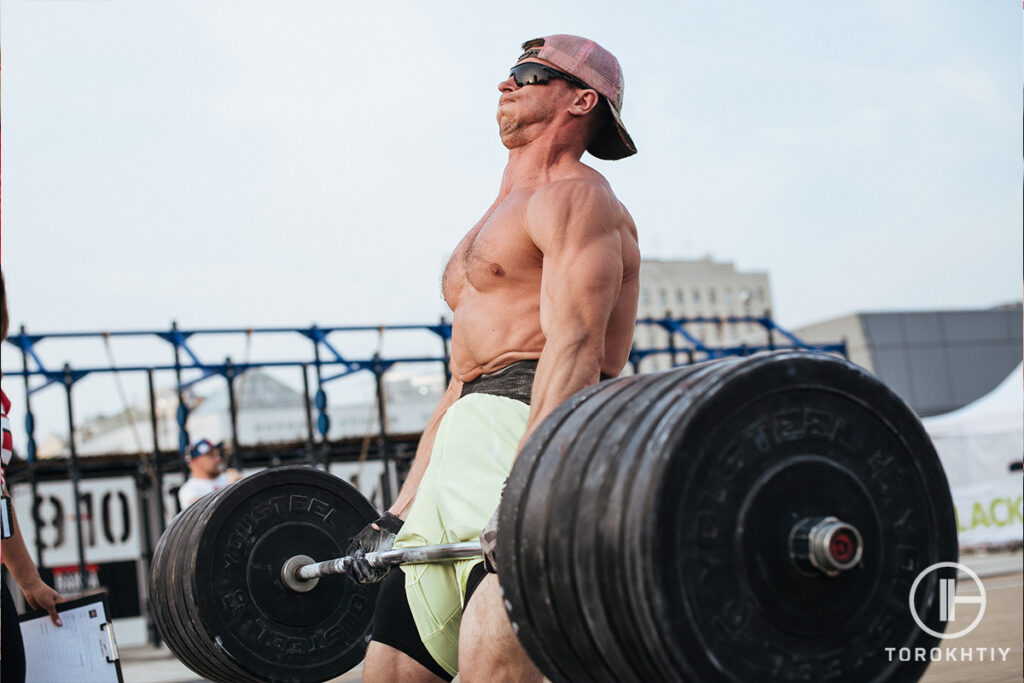
5. Develop Accessory Muscle Strength
There is no doubt that the deadlift develops the strength of all the muscles in the athlete’s body. But the safe and effective execution of the deadlift itself is impossible without strengthening the stabilizer muscles and additional muscles.
For those who love to do deadlifts and dream of new results, you need to regularly do the following exercises:
- pull-ups with different grips with weight;
- vertical and horizontal rows;
- farmer’s walks;
- all squat variations;
- different planks (statics, dynamics), including lateral and reverse;
- all variations of kettlebell swings to strengthen the back line and develop explosive strength;
Trust me, that most of the exercises have always been present in your training program, but if suddenly not, turn them on today.
6. Intensity and Progressive Overload
Obviously, for progress, you need to increase the load, and to become stronger, it is necessary to purposefully develop strength. One method of developing strength is Progressive Overload.
In simple terms, progressive overload is an alternation of training methods that puts the athlete under stress that they have not experienced before. Adapting to this stress makes him bigger, stronger, faster. And it’s not just an increase in barbell weight, sets, and reps. It can also be:
- training frequency;
- rest time between sets;
- ways of doing the exercises that we discussed in paragraph 4.
A mix of these techniques can help accelerate progress and avoid deadlift training plateaus. Speaking about specific parameters of the load, you need to remember that strength work is a load of 75-85% of your 1 RM, for 3-8 reps.
Once again I will repeat the thought that I said at the beginning of the article: all this WITHOUT correct angles and technique is a direct path to injury.
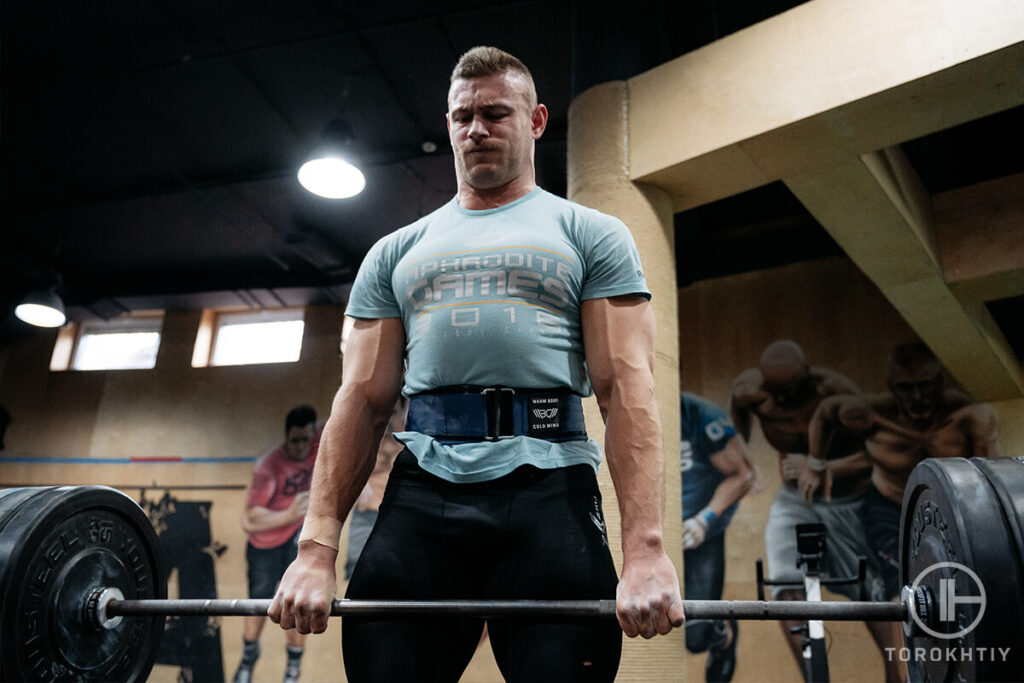
7. Pull barefoot
To train barefoot sounds strange for a competing weightlifter, and to the average person it may seem unhygienic, but it is quite normal for powerlifters and functional athletes.
Pulling barefoot is much more comfortable than in weightlifting shoes, since the overturning effect of the barbell is much less, and the work of the buttocks and the back of the thigh is much stronger. And the barbell path becomes a few centimeters shorter.
By the way, in our teenage years, when we went to a sports summer camp, the coach forced us to train with light weights barefoot to develop coordination and balance. I think many people saw Dmitry Klokov doing 170 kg snatch barefoot during one of his camps)))
8. Fighting Spirit & Load Balancing
Never underestimate the power of mental preparation. Our coach has always said that at the Olympic Games, athletes from first to sixth place are equally strong, but the champion becomes the one with stronger nerves and fighting spirit. Also, no one canceled visualization or, as sports psychologists call it, autogenic training: when you play in your head performance at a competition or a hard training attempt.
Come on, next time you prepare for the first set, tune in and imagine how you are doing the exercise successfully. You will be surprised at how much more powerful and confident the pull will feel.
Just like the “ideal” rep range, the optimal training frequency is always a hotly debated subject. The lighter the training weights and the fewer sets per workout, the more often you can train a muscle group. Conversely, the heavier the weights and the more sets per workout, the less often you can train a muscle.
Deadlift training for maximum results is always working with heavy loads. The experience of high-level powerlifters shows that they practice extremely heavy deadlifts 1-2 times a week, and the last heavy deadlift is done 3 weeks before the performance. These intervals should help you understand how important physical and mental recovery is and that it takes time. It is also important to remember that powerlifters can develop enormous strength, but often lose to weightlifters, strongmen and functionalists in power, speed and flexibility.
For each of us, the HEAVY deadlift is a very conditional concept: for some, it is a record of 300 kilograms in competitions, for someone the opportunity to do the maximum deadlift reps after a series of burpees, for someone the opportunity to simply warm-up their body in the morning, and for some -the power reserve to powerfully accelerate the barbell in the snatch and, after the power position and catch it above the head.
Related articles:
- Top 5 Tips For Snatch And Power Snatch
- Top 5 Tips For Clean And Power Clean
- Squats Warm Up
- Training From Deficit
You might be interested in:
Why Trust Us?
With over 20 years in Olympic weightlifting, strength training, nutrition coaching, and general fitness our team does its best to provide the audience with ultimate support and meet the needs and requirements of advanced athletes and professional lifters, as well as people who strive to open new opportunities and develop their physical capabilities with us.
By trusting the recommendations of our certified experts in coaching, nutrition, and sports training programming, as well as scientific consultants, and physiotherapists, we provide you with thorough, well-considered, and scientifically proven content. All the information given in the articles concerning workout programming, separate exercises, and athletic performance, in general, is based on verified data.
The product testing process is described in more detail here.
Author: Oleksiy Torokhtiy
Olympic Weightlifting Champion, PhD in Sport Science
Best Results: Snatch – 200 kg,
C&J – 240 kg
Oleksiy Torokhtiy is a professional athlete boasting 20 years of experience in Olympic weightlifting. With multiple European and World titles under his belt, he has showcased his prowess in two Olympic Games (Beijing 2008 and London 2012). Upon concluding his illustrious career, Oleksiy dedicated himself to coaching. By 2022, he had conducted over 200 weightlifting seminars worldwide. He is the visionary behind an international sportswear and accessories brand known for its motto, “Warm Body Cold Mind.” Additionally, he is an esteemed author and the creator of a series of training programs and eBooks.



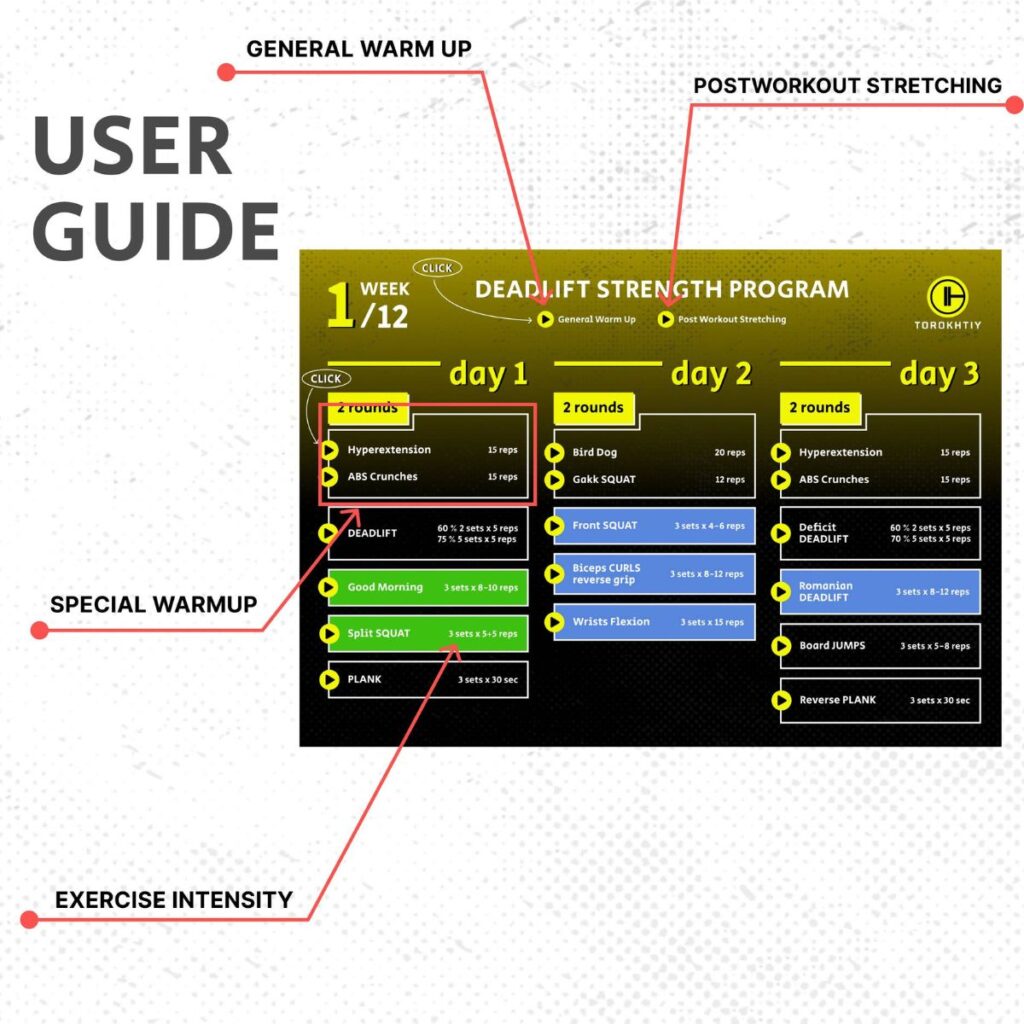
Still have questions after reading our article? Unlock your full potential by engaging with our experts and community! Don’t hesitate — leave a comment below and Oleksiy Torokhtiy will provide a personalized answer and insights to help you reach your goals.